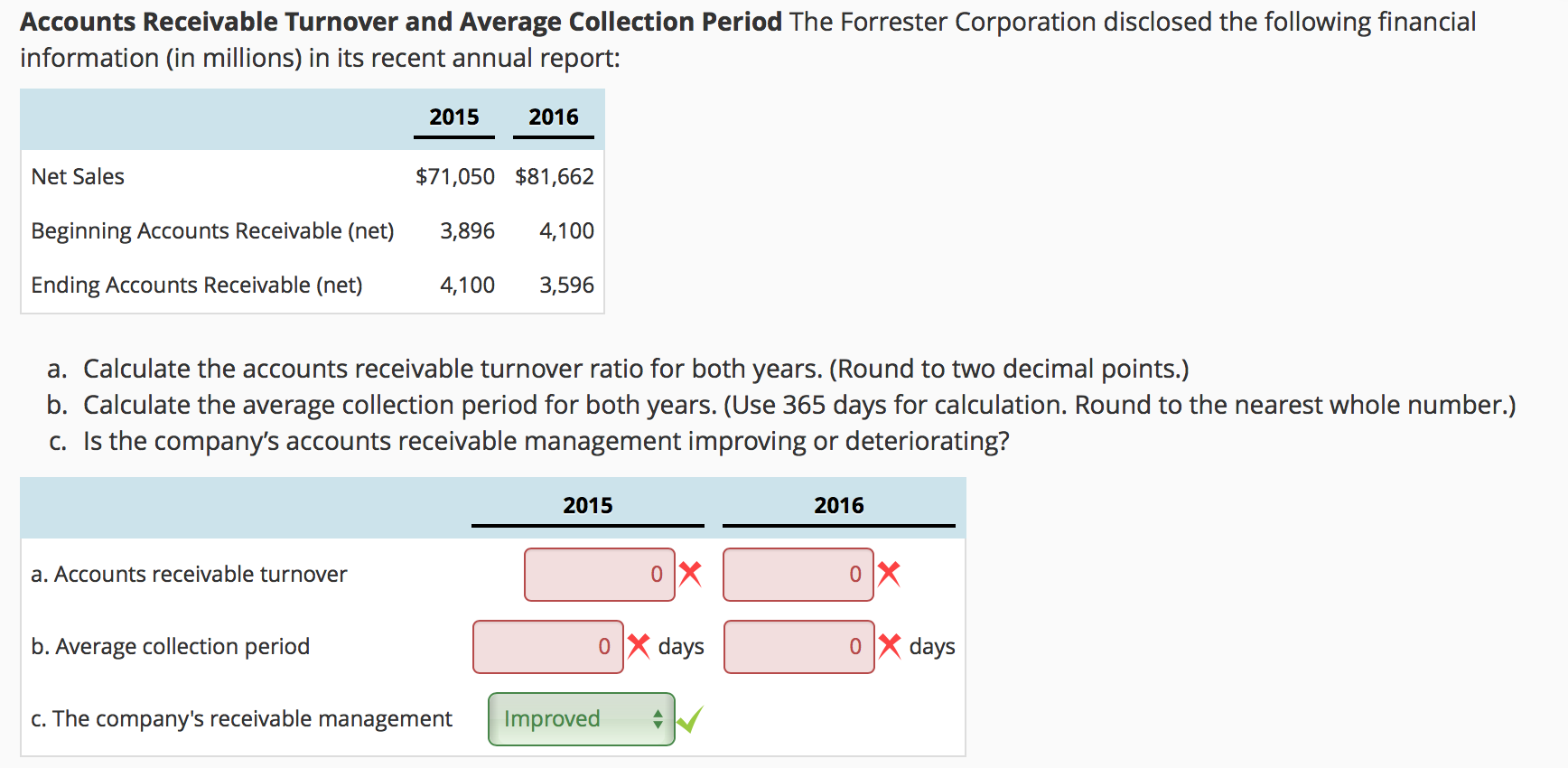

Ways To Improve Your Accounts Receivable Turnover RatioĪfter calculating your A/R turnover ratio and comparing it to the industry standard, you may want to improve it. This is a higher A/R turnover ratio than ABC Company in Sample 1, which means that XYZ is collecting from customers faster than ABC. $100,000 Net Sales / $15,000 Average A/R Balance = 6.67 Average A/R Turnover RatioĪn A/R turnover ratio of about 7 means XYZ Company was able to collect its average A/R balance ($15,000) about seven times throughout the year. The average A/R turnover ratio for XYZ Company is calculated as follows: The average A/R for XYZ Company is calculated as follows: XYZ Company had the following results in the first year: Sample 2: Accounts Receivable Turnover Ratio for XYZ Company $1.3 million Net Sales / $325,000 Average A/R Balance = 4 Average A/R Turnover RatioĪn A/R turnover ratio of 4 means ABC Company was able to collect its average A/R balance ($325,000) about four times throughout the year. The average A/R turnover ratio for ABC Company is calculated as follows: The average A/R for ABC Company is calculated as follows: Sample 1: Accounts Receivable Turnover Ratio for ABC CompanyĪBC Company had the following results last year:

AR TURNOVER HOW TO
Accounts Receivable Turnover Ratio Examplesįor you to have a good grasp of how to calculate the A/R turnover ratio, we provided examples using two fictitious companies. What’s acceptable for a bookkeeping service company may not be acceptable for a photographer. Part of your analysis should be finding out what the average A/R turnover ratio is for your industry to see how yours matches up. Whichever way your A/R ratio is trending, you’ll need to do additional research to determine the cause.

It could also be an indication that you need a more streamlined A/R process that includes promptly invoicing customers and sending payment reminders before invoices become due.

A high A/R turnover ratio means you collect from customers quickly, indicating that you have a strict credit policy and a solid collections process in place to ensure prompt payments.It gives you information about your credit policy and collection process. Similar to other financial ratios, the A/R turnover ratio is only one piece of information about a business’s ability to collect from its customers. Take the net credit sales and divide it by the average A/R balance.Ī/R Turnover Ratio = Net Credit Sales / Average A/R How To Interpret the Accounts Receivable Turnover Ratio Step 3: Divide Net Credit Sales by Average A/RĪfter calculating the average A/R balance and obtaining the net credit sales for the period, you can calculate the A/R turnover ratio. Note that you can generate an income statement on QuickBooks in a few minutes. Net Credit Sales = Sales on Credit – Sales Returns – Sales Allowances You can obtain this information from your profit and loss (P&L) report, also known as the income statement. This figure shouldn’t include any product returns, allowances, and cash sales. Net credit sales is the amount of revenue generated that a business extends to customers on credit.
AR TURNOVER SOFTWARE
It’s calculated by adding the A/R balances at the start and end of the period and dividing the total by two.Īverage A/R = (Beginning A/R + Ending A/R) / 2Īccounting software like QuickBooks Online lets you run a balance sheet report for the beginning of the period and the end of the period to obtain these numbers. The average A/R is the balance owed by customers in a given period. New Calculation Step 1: Calculate Average A/R


 0 kommentar(er)
0 kommentar(er)
